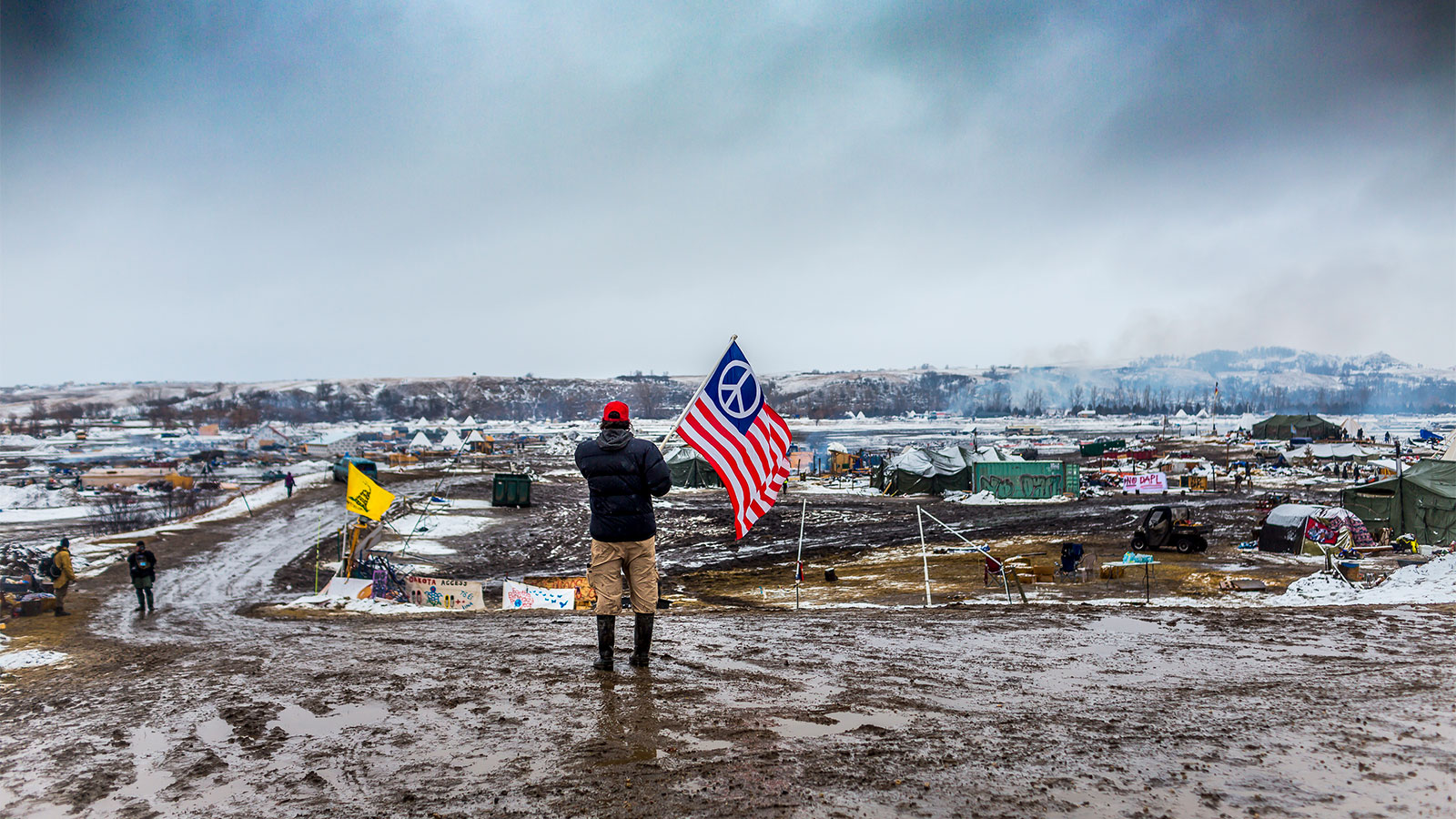Seven years after thousands of people converged in North Dakota to block the construction of the Dakota Access pipeline, the public now has an opportunity to weigh in on the environmental risks associated with the section of the pipeline crossing half a mile north of the Standing Rock Sioux Tribe reservation.
The 2016-2017 protests brought prolonged, international attention to the Standing Rock reservation, and the Nation’s fight to protect its sacred sites and drinking water. Yet despite months of protests, the project eventually went through with the support of then-President Donald Trump. By June 2017, oil was flowing, and today, up to 750,000 barrels of petroleum pass through the pipeline, which stretches from western North Dakota to southern Illinois.
But the story continued. In 2020, a federal court ruled that the Army Corps of Engineers had not done a thorough enough analysis of the project’s impacts, noting that the pipeline’s “effects on the quality of the human environment are likely to be highly controversial.” The court ordered the Army Corps to produce a full environmental impact statement on the section of the pipeline that crosses underneath Lake Oahe and stop the flow of oil. A higher court later determined that the pipeline could continue operating, but agreed that a more extensive environmental analysis needed to be completed.
That analysis is happening now, and Steven Wolf, chief of the public affairs office in the Omaha branch of the Army Corps, said the current public comment period is an opportunity for the public to weigh in on whether the draft environmental impact statement is adequate — essentially serving as a quality control check on the agency’s revised analysis.
“This is a way for the public to say, ‘Yes, you studied this thoroughly, or no, we think you need to look at some more information,’” he said. “Public input will actually help us to do better analysis and also to ultimately reach a better decision.”
The Army Corps’ new draft environmental impact statement says there haven’t been any leaks from the pipeline since it began operating, although there have been some spills at aboveground facilities where the oil has been recovered. The draft analysis describes the possibility of an oil spill underneath Lake Oahe as “remote to very unlikely,” and concluded that oil would be more likely to spill if it were transported via car or train.
While the draft environmental impact statement acknowledges that the water in the Missouri River corridor is considered sacred to Indigenous peoples, Janet Alkire, chair of the Standing Rock Sioux Tribe, is worried about the possibility of a petroleum spill that could contaminate her community’s water source. “Am I going to be the tribal chair that has to deal with a disaster? A pipeline that breaks? Am I going to be in that position?” she asked Army Corps officials at a meeting earlier this month.
The company behind the pipeline, Energy Transfer Partners, did not respond to a request for comment for this story.
Wolf says it’s important to remember that the public comment period deals strictly with the half-mile stretch of the pipeline under Lake Oahe. He added that the Army Corps only regulates land used by the company and has no authority to regulate the pipeline itself. “We don’t build pipelines,” said Wolf. “We don’t operate pipelines. We don’t regulate pipelines.” Wolf added that regulatory responsibility sits with the U.S. Department of Transportation.
Still, that authority is consequential. If Army Corps denies the easement, that could force Energy Transfer Partners to reroute the pipeline further away from the Standing Rock reservation.
One option is to move the pipeline 50 miles north of where it is currently, crossing nearly 9 miles north of Bismarck, North Dakota. Energy Transfer Partners analyzed a similar route prior to building the pipeline. In its 2016 environmental assessment, the Army Corps supported avoiding that route, noting its proximity to municipal water supplies. Jade Begay, director of policy and advocacy at NDN Collective, said that the Army Corps’ decision to approve the pipeline’s placement near the reservation rather than the majority-white city of Bismarck was problematic.
“That crossing was really why so many people showed up, because this was a symbol of blatant environmental injustice and environmental racism,” she said.
Steven Wolf says so far the Army Corps has already received tens of thousands of comments. However, many of them are form letters, which the Corps considers a single comment even if it is sent in by thousands of people. Wolf said the agency will respond to every unique issue raised. He estimated a final environmental impact statement on the section in question will take at least a year to complete.
Begay said the public comment period open now is an important opportunity for people to hold the federal government accountable.
“These laws that protect our landscapes, our water, our biodiversity, are really the things keeping us from seeing total destruction and disregard for our clean water and for environmental justice,” she said. “We have to keep the pressure on.”
The Army Corps is accepting comments until December 13.




